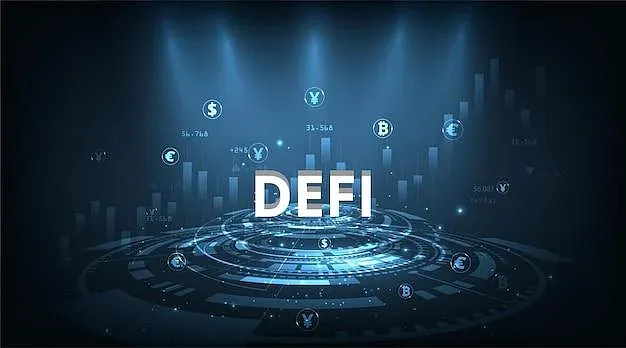Institutional DeFi: How Big Players Are Changing the Game for Crypto Traders in 2025
Let’s unpack the new landscape: the benefits, the risks, and how you stay one step ahead in the era of regulated DeFi platforms and institutional crypto trading strategies.

It was never going to stay small.
Decentralized Finance—DeFi—was once the Wild West of crypto. Anonymous wallets, open protocols, liquidity mining, yield farming. A chaotic playground where code ruled and anyone could be a trader, a lender, or a liquidity provider.
But now? The suits have arrived.

Welcome to 2025, where institutional DeFi adoption isn't just a possibility—it’s the reality. And it’s reshaping everything.
Big banks. Hedge funds. Asset managers. They’re no longer just watching from the sidelines. They’re building, trading, governing, and in some cases—controlling the very protocols DeFi was meant to democratize.
So what does this mean for individual US crypto traders?
Let’s unpack the new landscape: the benefits, the risks, and how you stay one step ahead in the era of regulated DeFi platforms and institutional crypto trading strategies.
What Is Institutional DeFi?
At its core, institutional DeFi refers to large, regulated entities—think Goldman Sachs, Fidelity, BlackRock—participating directly in DeFi ecosystems.
But unlike the average user farming tokens on a weekend, these institutions:
- Use compliant DeFi platforms like Aave Arc or Compound Treasury
- Integrate on-chain analytics with off-chain risk models
- Demand KYC/AML protocols even on decentralized platforms
- Operate with large capital stacks and coordinated strategies
This isn't DeFi as we knew it. This is DeFi with suits, structure, and strategy.
Why Institutions Are Flooding Into DeFi in 2025
The incentives are clear:
- Yield: Even in a high-interest environment, DeFi protocols often offer superior returns with fewer intermediaries.
- Speed: Settlement times are measured in seconds, not days.
- Transparency: Open-source contracts make auditing easier and real-time tracking possible.
- Liquidity: Institutional DeFi pools now surpass $100B in TVL (Total Value Locked), offering deep markets for a growing range of assets.
What changed between 2023 and 2025? Regulation.
The rise of compliant DeFi rails—think Fireblocks for custody, Chainalysis for analytics, Aave Arc for permissions—made it possible for institutions to enter the space without violating US financial laws.
And now that they’re here, the playing field is very, very different.
The Impact on DeFi Prices and Volatility
Retail traders often assume that institutional involvement equals stability. And to a degree, that's true.
- More liquidity = smaller slippage
- Longer time horizons = less reactionary sell-offs
- Sophisticated strategies = more nuanced price discovery
But it’s not all smooth sailing.
Big players don’t just participate—they move markets.
- Flash liquidity adds or exits can whipsaw low-volume assets
- Whale governance can shift protocol directions overnight
- OTC deals and private farming contracts can limit retail upside
In short: institutional DeFi isn't necessarily less volatile—it’s just a different kind of volatility.
The Rise of Regulated DeFi Platforms in the US
As the SEC and CFTC step further into the crypto ring, DeFi platforms are evolving. What was once a fringe movement is now onboarding institutions with Know Your Customer (KYC) systems, risk scoring, and audited smart contracts.
Examples include:
- Aave Arc: Permissioned liquidity pools with KYC
- Compound Treasury: Fixed-income DeFi for institutions
- Ondo Finance: Tokenized Treasuries and bonds
- Maple Finance: Institutional lending with undercollateralized loans
The rise of these platforms—many based in New York, San Francisco, and Chicago—means that DeFi is no longer a parallel economy. It’s merging with TradFi.
What This Means for Retail US Crypto Traders
Now comes the real question: Should you be worried or excited?
Let’s be honest. The game is changing. DeFi for institutions isn’t built for the average degenerate ape with MetaMask and meme tokens.
But for retail traders who understand the shift, this moment is filled with opportunity:
The Benefits
- Deeper liquidity in major protocols
- Better UX due to enterprise-grade platforms
- Yield opportunities from tokenized real-world assets
- More stable DeFi primitives (DAOs, oracles, insurance)
The Risks
- Increased competition from algorithmic, high-frequency strategies
- Higher fees on permissioned platforms
- Governance manipulation by whale voters
- Gatekeeping as some DeFi apps prioritize institutional onboarding
Retail traders need to level up. That means using on-chain data, learning DeFi governance models, and understanding how large players think.
Because when the big money moves, your edge is not just having access—it’s knowing how to interpret the flow.
TL;DR
The institutions have officially entered the DeFi arena in 2025. They bring deeper liquidity, more regulation, and a new wave of strategic capital to the ecosystem. While this creates a more mature market, it also introduces new forms of competition and centralized influence. Retail traders must evolve—or risk being outpaced in a space they helped pioneer.
FAQs
What does "institutional DeFi" mean?
It refers to the participation of large financial players like banks, hedge funds, and asset managers in decentralized finance ecosystems—typically through regulated, KYC-compliant DeFi platforms.
How will institutional adoption affect crypto prices and volatility?
It can lead to more stable pricing due to deeper liquidity and longer-term strategies. But it might also introduce new volatility triggers from large capital shifts and whale-controlled governance.
What are some potential benefits and risks of institutional DeFi for retail traders?
Benefits:
- More liquidity
- Improved platforms
- Tokenization of real-world assets
Risks:
- Increased competition
- Protocol centralization
- Market manipulation by large players
Are there regulated DeFi platforms in the US?
Yes. Examples include Aave Arc, Compound Treasury, Ondo Finance, and Maple Finance—all tailored for institutional compliance and liquidity management.
Will traditional banks become DeFi platforms?
Some already are. Banks like JPMorgan and Fidelity are building infrastructure for tokenized finance and partnering with compliant DeFi protocols. The lines are blurring fast.